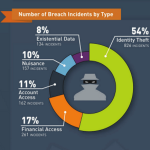
The following is an article from the July 30, 2015, edition of the National Review written by Myra Adams :
While engaging in the mundane task of gathering financial statements for a “secure retirement” meeting with my husband’s and my adviser, this Baby Boomer stumbled upon documented proof that our nation does not have the guts to confront one of its most serious economic problems. The realization came when I pulled from my files a document statement innocently titled, “Your Social Security Statement.”
At first glance, the statement did not appear menacing. I was told I could expect to receive a benefit of “about $2,136 a month” upon reaching age 70 — which certainly seems like good news. But immediately I thought of a parallel of President Obama’s infamous Obamacare promise: “If you like your Social Security, you can keep your Social Security.”
Then, as if on cue, I saw an asterisk with the following message:
The law governing benefit amounts may change because, by 2033, the payroll taxes collected will be enough to pay only about 77 percent of scheduled benefits.
I could not believe I was seeing the equivalent of what I was just thinking, but with a new twist, “If I like my Social Security, I can keep 77 percent of it.” With an asterisk, my beloved government was informing me that they will be unable to fulfill their part of a financial arrangement into which, as their statement attested, I had been making mandatory contributions starting in 1971 at age 16.
This impending “benefit rationing,” reducing my future financial “security” by $492 a month, may, in fact, not be the worst of it.
Sitting in the back of my Social Security file was an earlier statement dated March 10, 2009. Again, followed by an asterisk was a sentence that read exactly like my 2015 statement except for two major differences (emphasis added):
The law governing benefit amounts may change because, by 2041, the payroll taxes collected will be enough to pay only about 78 percentof your scheduled benefits.
Clearly, in 2009, the government’s prediction — that Social Security would have to be cut to 78 percent of benefits come 2041 — was overly optimistic.
Now, in 2015, they are projecting 2033, eight years earlier, with one percentage point less of my projected benefits. The projections have steadily worsened over the past few years, helped by a much weaker economy than the federal government expected. Does anyone really expect these numbers to get better?
The skepticism I felt when I saw my initial monthly benefit was entirely justified. There are just too many Baby Boomers and too many financial promises with elected leaders too afraid to inflict the necessary pain of real reform.
But the pain will be much, much greater when monthly Social Security benefits are rationed. Now is the time for Baby Boomers to force their elected leaders to confront this issue and take action. The planned benefit reduction should be a major talking point for every 2016 presidential candidate, but somehow it is not.
Why? Politicians fear confronting the truth, and they fear Americans can’t handle it.
Meanwhile, here is the truth, as stated by the Social Security Administration in its annual Trustees Report from 2014:
Social Security is not sustainable over the long term at current benefit and tax rates. In 2010, the program paid more in benefits and expenses than it collected in taxes and other noninterest income, and the 2014 Trustees Report projects this pattern to continue for the next 75 years.
The old cliché “demographics is destiny” has never been more applicable. In January 2011, the first 1946-born Baby Boomers began turning age 65, at the rate of 10,000 a day. This gray-haired evolution continues for 19 straight years — until the end of 2029 — when the youngest crop of Baby Boomers, born in 1964, finally turn 65.
That adds up to just over 69 million former hipsters who changed America at every stage of their lives (though, of course, some of them have died). Now, many equipped with artificial hips and knees, they’re expecting generous automated deposits from the government at the first of each month. (With many millions of them over time eventually receiving far greater amounts than what they initially contributed.)
Keep in mind that those millions of surviving Baby Boomers do not include all the immigrants, also aging, who came to America in the past decades. The official total is 74.9 million Boomers native and foreign-born.
Here is more truth (and pain) from the Social Security Administration:
The population of retirees is projected to double in about 50 years. People are also living longer, and the birth rate is low.
Baby Boomers can expect to live longer than any previous generation, which compounds the problem, and on the other side of the equation, we have the low national birth rate. Combined, the Social Security actuaries put it this way:
Trustees project that the ratio of 2.8 workers paying Social Security taxes to each person collecting benefits in 2013 will fall to 2.1 to 1 in 2032.
Like it or not, the worker shortage is a key reason why our government is importing immigrants (both legal and illegal). Don’t buy it? See this 50th anniversary video commemorating President Johnson’s signing Medicare into law, produced by a group promoting immigration reform — clearly implying more immigration is what’s keeping Social Security and Medicare afloat.
The Social Security trustees go on to warn that “if no changes are made to the program,” they project that “assets will be sufficient to allow for full payment of scheduled benefits through 2032” — hence the most recent warning on my Social Security statement.
Don’t you just love understated government language explaining what will soon become a Baby Boomer revolt?
My favorite phrase: “If no changes are made to the program.”
Let’s face it. Congress is never going to make changes to the program. It won’t happen, or certainly won’t happen any time soon, because (surprise) Baby Boomers themselves are against changing the benefit formulas.
So, barring some positive developments, in 18 years — or less — Washington, D.C., will be filled with aging protesters, many using walkers, wheelchairs, or scooters. They will carry signs reading, “Give me my full benefits” and “It’s my money.” Old men wearing Vietnam veteran caps will be demanding, “100 percent and no less.” By that time, it will be too late.
What comes to mind is a classic 1965 song by The Who, “My Generation.” If you are of a certain age you know the famous lyrics, “I hope I die before I get old.” Now, since the Baby Boomer generation is already redefining what it means to be “old,” it’s time to rewrite the lyrics: “I hope I die before the government goes broke.”
As things are going right now, you won’t, but it will.
— Myra Adams is a media producer and political writer. She was on the 2004 Bush campaign’s creative team and the 2008 McCain campaign’s ad council. Her writing credits include PJ Media, the Daily Beast, World Net Daily, RedState, and the Daily Caller.









